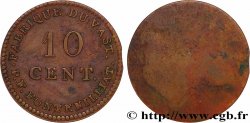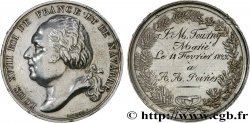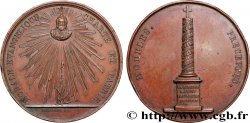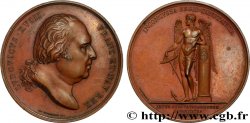E-auction 352-265759 - fme_412498 - LOUIS XVIII Médaille de François-Alexandre, duc de La Rochefoucauld
You must signin and be an approved bidder to bid, LOGIN TO BID. Accounts are subject to approval and the approval process takes place within 48 hours. Do not wait until the day a sale closes to register. Clicking on « bid » constitutes acceptance of the terms of use of cgb.fr private e-auctions.
Bids must be placed in whole Euro amounts only. The sale will start closing at the time stated on the item description; any bids received at the site after the closing time will not be executed. Transmission times may vary and bids could be rejected if you wait until the last second. For further information ckeck the E-auctions F.A.Q.
NO BUYER'S FEE.
NO BUYER'S FEE.
| Estimate : | 90 € |
| Price : | 19 € |
| Maximum bid : | 26 € |
| End of the sale : | 13 January 2020 18:21:30 |
| bidders : | 6 bidders |
Type : Médaille de François-Alexandre, duc de La Rochefoucauld
Date: 1823
Mint name / Town : 95 - La Roche-Guyon
Metal : bronze
Diameter : 42 mm
Orientation dies : 12 h.
Engraver CAUNOIS François Augustin (1787-1859)
Weight : 39 g.
Edge : lisse
Coments on the condition:
Superbe médaille avec une agréable patine brune mais quelques marques de manipulation (sur le front au droit par exemple)
Obverse
Obverse legend : F. ALEX. FRER. DUC DE - LA ROCHEFOUCAULD..
Obverse description : Buste à gauche d’Alexandre-François, 1er comte de La Rochefoucauld.
Reverse
Reverse legend : NÉ À / LA ROCHE GUYON, / SEINE ET OISE, / EN 1747. // MÉDAILLIER. / FRANÇAIS CÉLÈBRES / IXI SIÈCLE. / 1823..
Reverse description : Légende en huit lignes.
Commentary
Médaille signée CAUNOIS F. François Augustin Caunois est un sculpteur et médailleur français, né le 13 juin 1787 à Bar-le-Duc et mort en 1859 à Paris.
En tant que médailleur, Caunois participa à plusieurs concours monétaires. On connaît de lui un essai pour le concours de 1830 (pièce de 100 Francs à l’effigie de Louis-Philippe Ier). De même, il fit partie des 25 graveurs qui participèrent au concours monétaire de 1848. Il s'agissait de créer de nouvelles pièces de 20 francs, 5 francs, et 10 centimes. François Augustin Caunois proposa une pièce de 5 francs, mais le projet d'Eugène-André Oudiné fut retenu.
François XII Alexandre Frédéric de La Rochefoucauld, duc de Liancourt, puis 7e duc de La Rochefoucauld, est né en 1747 à la Roche Guyon, commune française située dans le département du Val-d'Oise en région Île-de-France. Le village est réputé pour son château, propriété des La Rochefoucauld, dominé par un donjon médiéval. Le lieu, classé parmi les plus beaux villages de France (c'est la seule commune francilienne à bénéficier de ce label), est devenu au XIXe siècle un centre de villégiature et a vu défiler de nombreuses célébrités des arts et des lettres.
En tant que médailleur, Caunois participa à plusieurs concours monétaires. On connaît de lui un essai pour le concours de 1830 (pièce de 100 Francs à l’effigie de Louis-Philippe Ier). De même, il fit partie des 25 graveurs qui participèrent au concours monétaire de 1848. Il s'agissait de créer de nouvelles pièces de 20 francs, 5 francs, et 10 centimes. François Augustin Caunois proposa une pièce de 5 francs, mais le projet d'Eugène-André Oudiné fut retenu.
François XII Alexandre Frédéric de La Rochefoucauld, duc de Liancourt, puis 7e duc de La Rochefoucauld, est né en 1747 à la Roche Guyon, commune française située dans le département du Val-d'Oise en région Île-de-France. Le village est réputé pour son château, propriété des La Rochefoucauld, dominé par un donjon médiéval. Le lieu, classé parmi les plus beaux villages de France (c'est la seule commune francilienne à bénéficier de ce label), est devenu au XIXe siècle un centre de villégiature et a vu défiler de nombreuses célébrités des arts et des lettres.







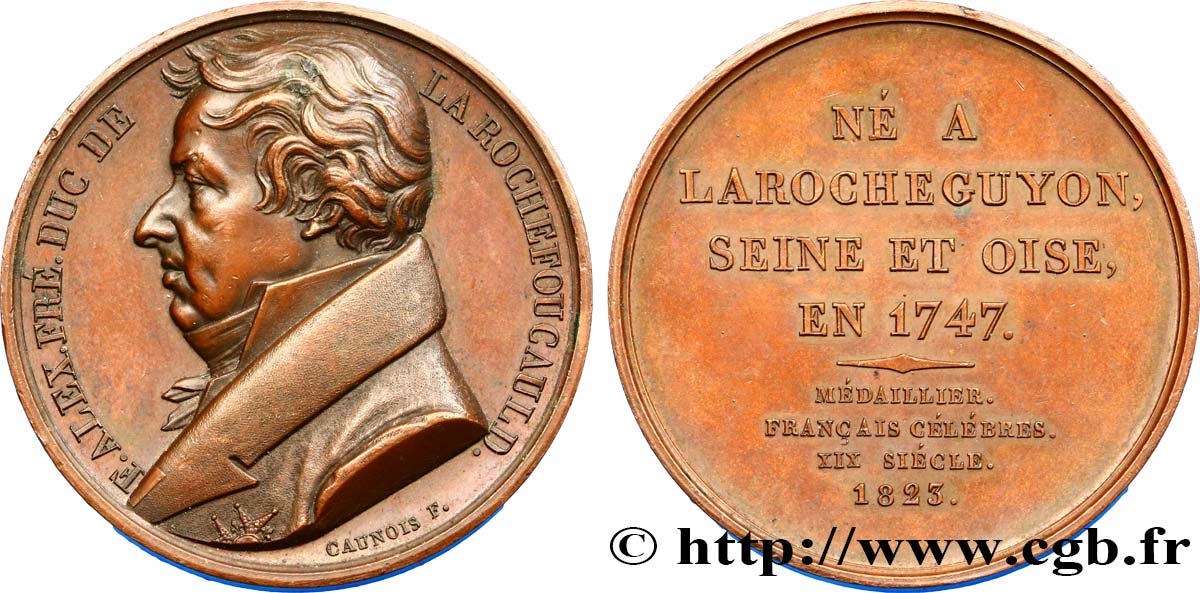
 Report a mistake
Report a mistake Print the page
Print the page Share my selection
Share my selection Ask a question
Ask a question Consign / sell
Consign / sell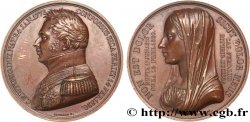
 Full data
Full data